20 Social Media Holidays to Celebrate This May
By Yasmin PierreApr 10
Unlock the secrets to staying ahead in the ever-evolving world of social media marketing.
Published September 24th 2014
If you’ve travelled in and out of the home of our HQ – Brighton – in the last couple of weeks, you might have noticed something twinkling up in the rafters. As part of our involvement with Brighton Digital Festival 2014, we created an exciting, interactive digital display, and then handed over the controls to the general public. What could go wrong?
In this abridged version of a longer, NSFW blog, Matt Pearson explains how the project came about, evolved and ended up in the news.
Phallic symbols, rude words and offensive phrases. This was the argument against from the outset. If we created a canvas and allowed anyone to post on it, entirely unmoderated, we were just inviting trouble.
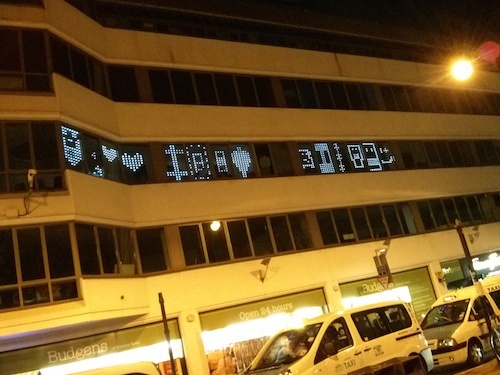
If we were to build a digital canvas, and open it up to the public, might we simply be building the latest, most technologically sophisticated, gallery space for crudely drawn penises? Or swastikas? Messages of racism / misogyny / hate?
Should we expect the worst of humanity, or might we give them a little faith and trust them to use the platform in more creative and sophisticated ways, as was intended?
This was the experiment.
The idea was first touted back in March. The design team wanted to do something with the Brandwatch building in celebration of the 2014 Brighton Digital Festival, which we sponsor. What, exactly, we weren’t quite sure.
The building overlooks Brighton Station so, while it is a little awkward for a gathering, it enjoys high footfall and is to many visitors their first impression of Brighton. We had an opportunity to give these visitors a bright, digital welcome.
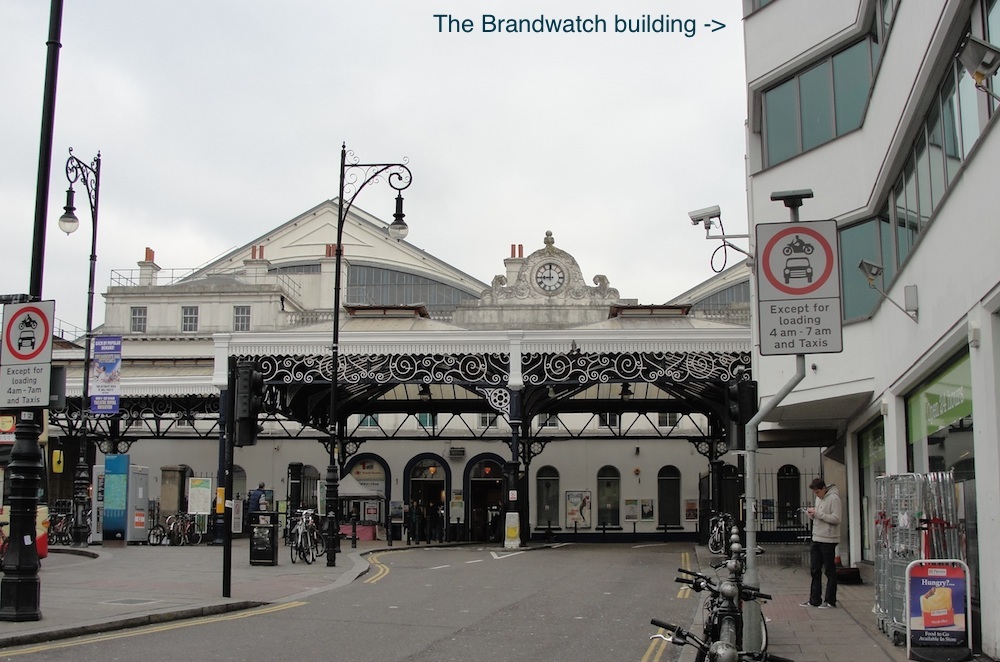
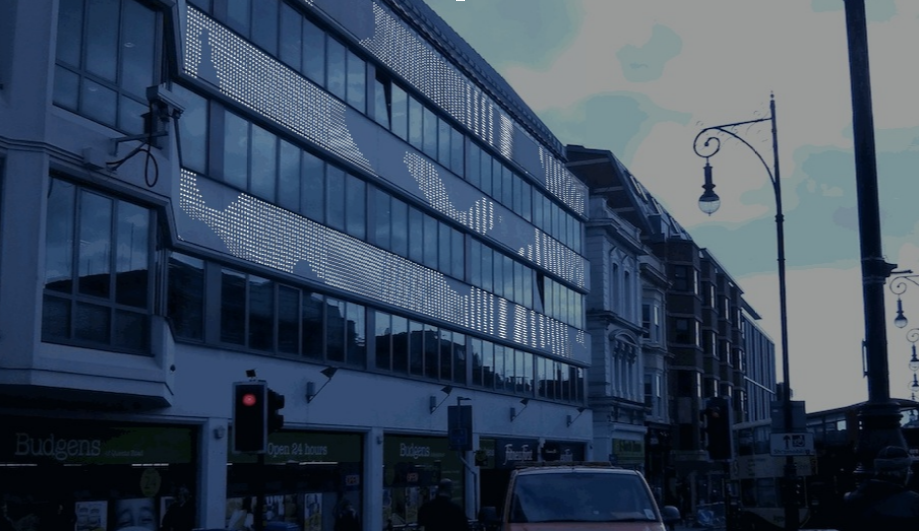
We wanted to do something a bit more than just a display. It had to engage the audience in some way. This was 2014 after all.
We’d allow people to draw on our windows, giving them full control of the pixels they put up there, but if we only provided the mechanism to target one window pane at a time they’d have just an 8×16 pixel grid in which to express themselves.
They could draw whatever they wanted, but it would be so lo-res it would take considerable skill to create a design that was unambiguously rude.
As you might imagine, we had a lot of fun at concept stage, as at that point there really was no limit to what we could do. But suddenly it was May, and September, the month of the festival, was fast approaching. It was time for reality to come a’knocking. I had to work out how to build it.
One of the joys of having the resources of a large company behind you is that one can have a stupid idea, with only a rough conception of what might be involved in realising it, and still stand a good chance of finding someone in the corporate mass who might understand what you’re talking about.
I hooked up with Ben Slaughter and Jimmy Taylor, who had considerably more electronics experience than me. I could make lights flash on a breadboard, but my only plan for scaling it up at that stage was just to do the same but bigger.
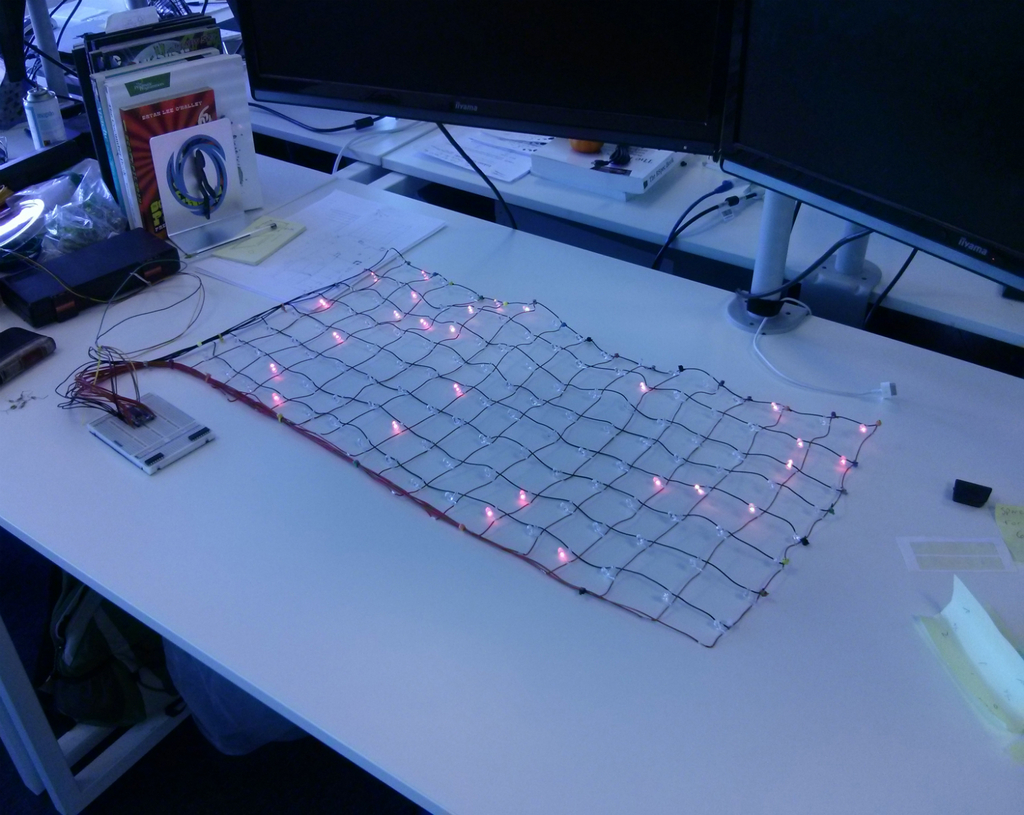
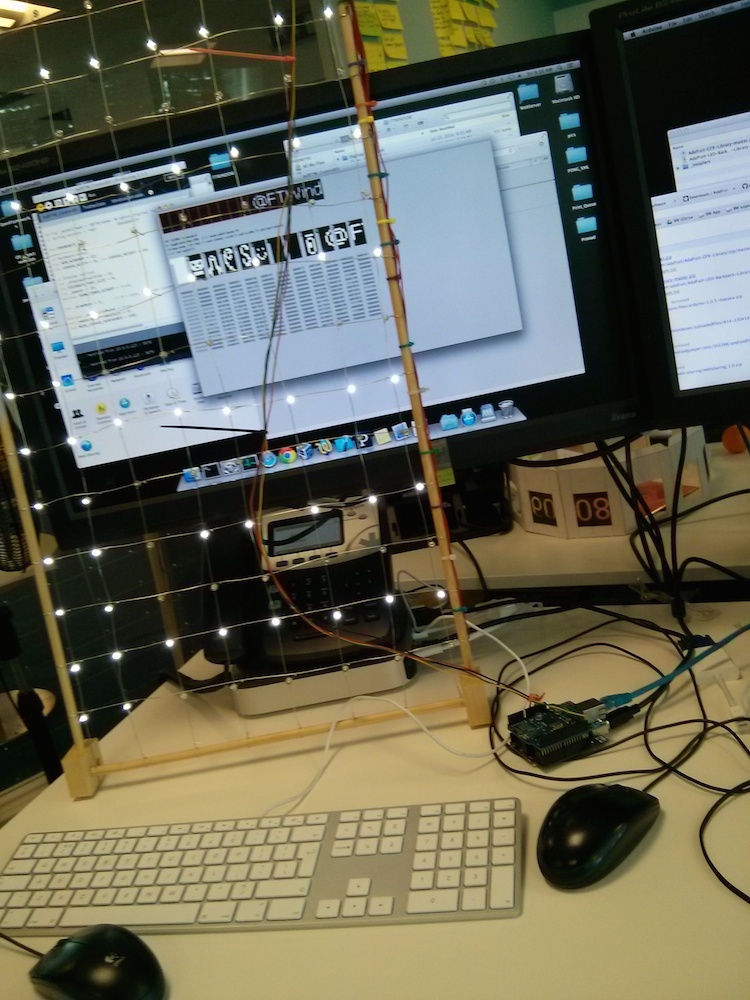
Two early prototypes
Having spent so long splashing around in the concept and prototyping phases, we were left with a shrinking amount of time to build the full-sized panels. We had four weeks, and day jobs, so the big question was how many panels we could feasibly construct in that time.
But again we had the advantage of:
With the help of a few more mass emails, a Doodle poll and some pleading, we recruited some more bodies – Brandwatch’s finest – who willingly volunteered their downtime and lunch-hours to do a bit of soldering, wiring and woodworking.
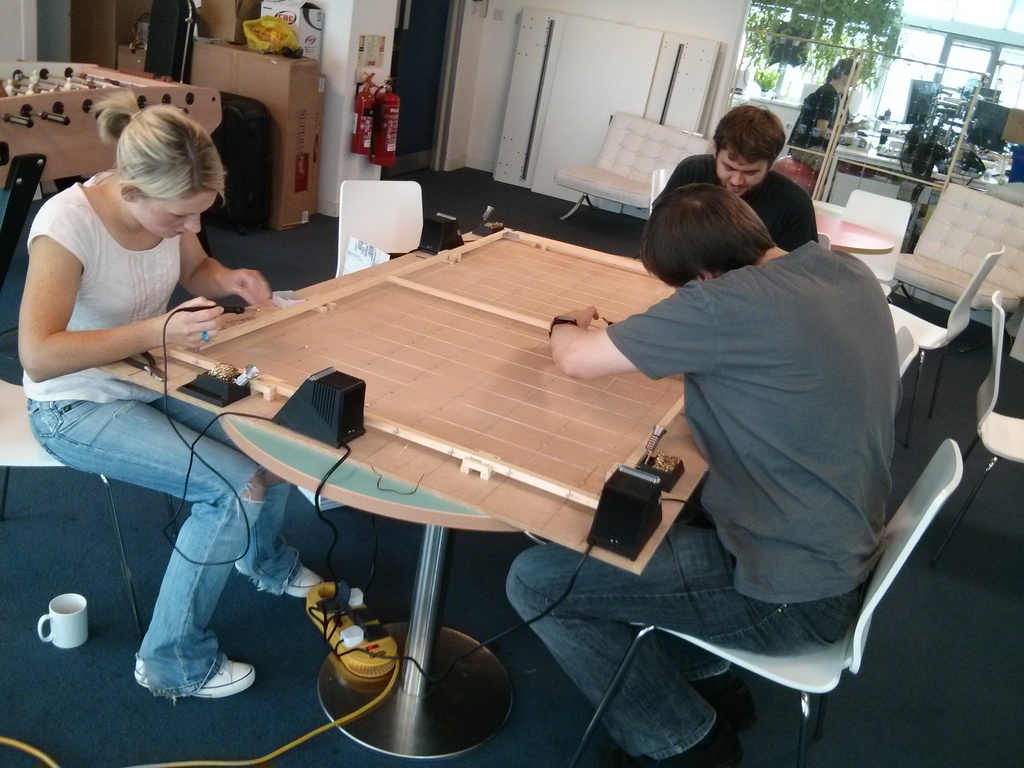
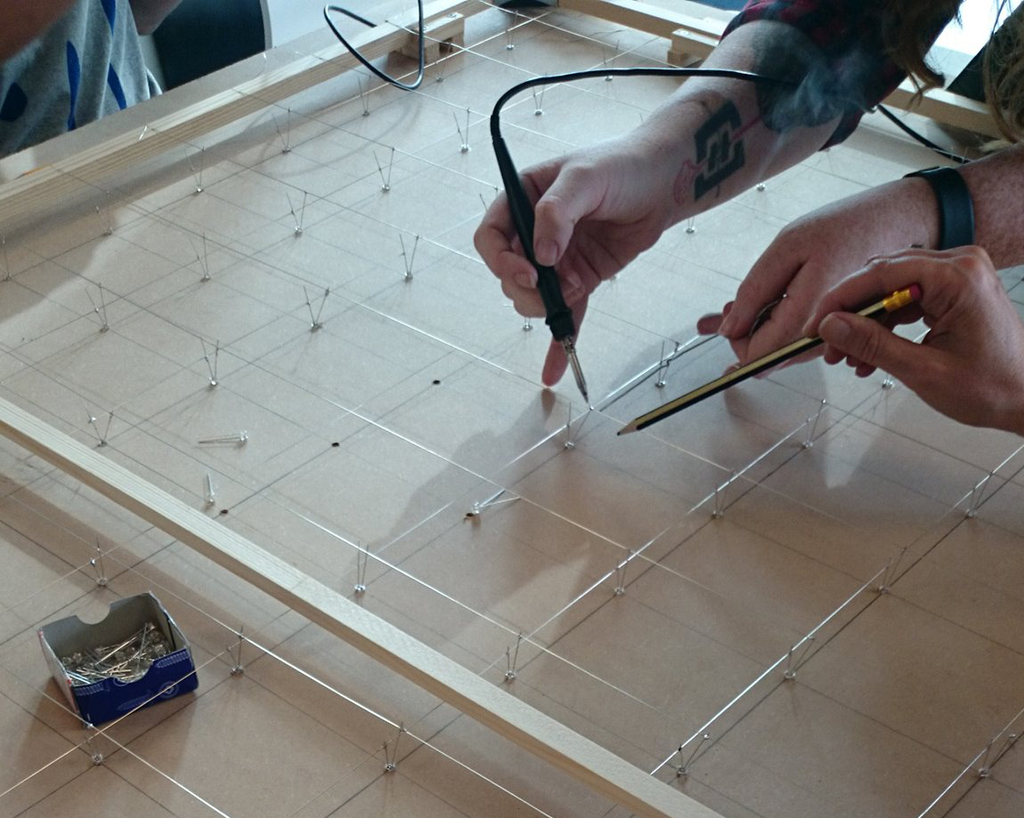
The production line constructing the full-sized panels
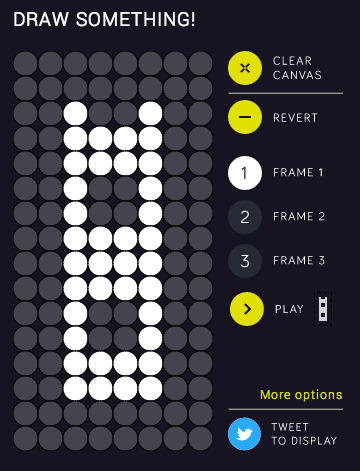
We decided to allow people to send just a single image, or three frames of animation, each frame encoded as a 32 character hex string.
The interface would construct their tweet for them. This was enough. Anything else would have been unnecessarily complicated.
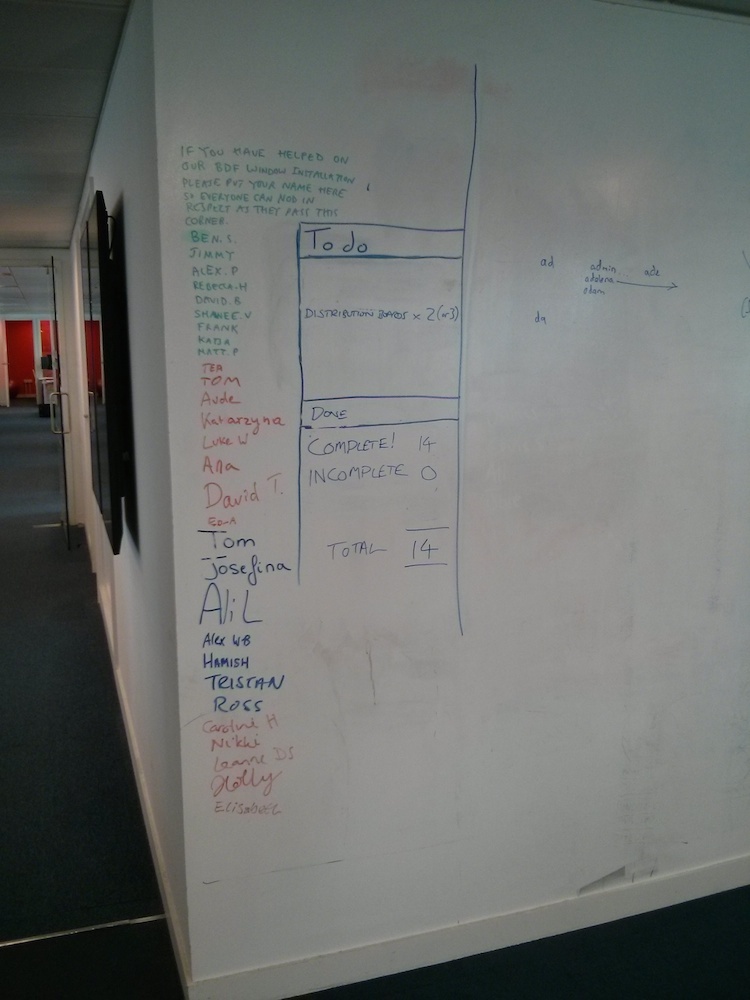
Our respect wall
There were 29 names written on the respect wall by the end of the month. 29 enthusiastic volunteers well deserving of respectful nods and fist-bumps.
But there was also credit due to the other 70-80 staff in the Brighton office, who good-heartedly stifled any complaints over us taking over their breakout area for a month, carefully stepping over the soldering iron cords and fishing stray LEDs out of their sandwiches.
The build was a truly collaborative project, making the finished piece every bit the product of the company, not just a handful of us.
We made it in time. We got 14 panels completed, working and mounted for the 1st Sept, the opening of the festival.
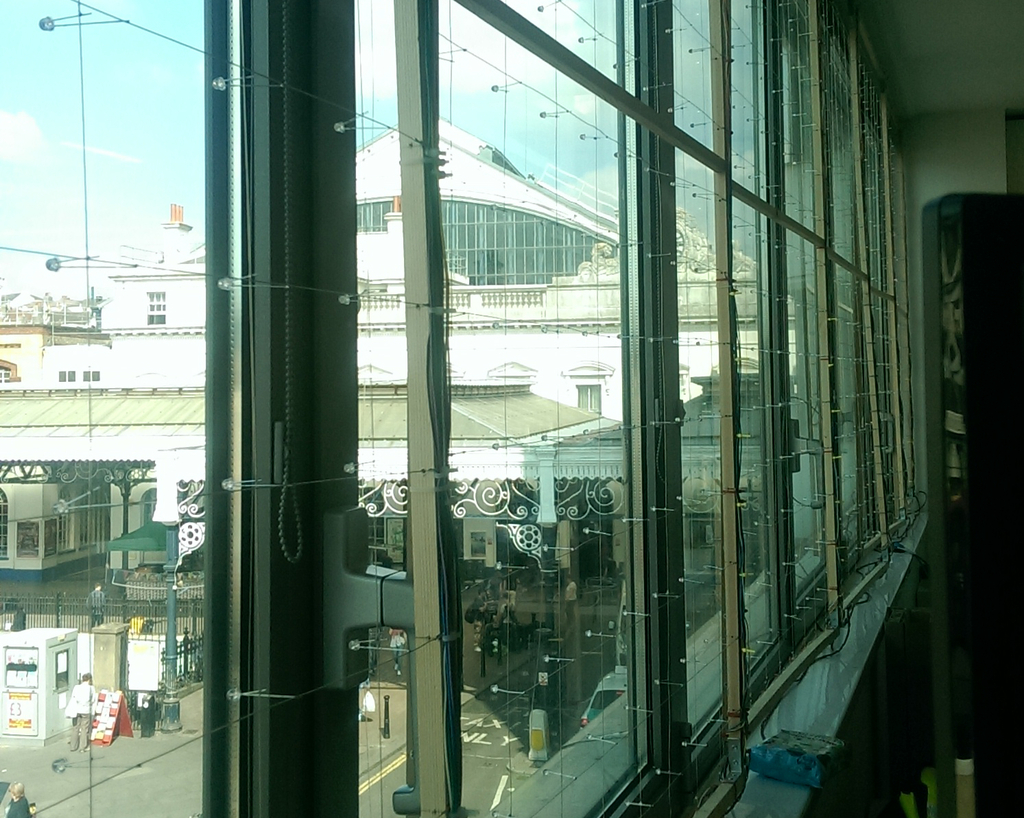
The mounted panels
For the first week it displayed only ambient animations and pre-defined text tickers. We didn’t want to open up the Twitter interactive element until we had a way of monitoring the display remotely, i.e. a webcam pointed at the building. This actually proved to be one of the most technically demanding parts of the project.
We couldn’t have done it without the utter loveliness of the staff of Grand Central, the pub over the road. They very kindly allowed us to leave a laptop and webcam in an upstairs room, trained at the building.
Luke Whiting, a late addition to our unofficial BW skunkworks team, came up with a way of extending the office wifi to the building 200 metres away by way of a tight-beam transmitter – to me akin to witchcraft.
We could now broadcast the pub livestream in full 1080 HD. Technology!
So, once it was visible to the world (not just Brighton) we could publicise the interface.
We had flicked the switch at lunchtime, in daylight, when the pixels were invisible, and everything had gone fine. Which may have been why I might have been a little overly-nonchalant as the sun went down.
It wasn’t until I got home that I first checked the video feed and saw our first user submitted creations. They were the work of one author, @brightonstation: “TaxiT**ts” with arrows pointing to the taxi rank below. Oh.
My first reaction was to laugh. Hard.
First I was happy it was being used. Second, I was pleased that the constraints were being hacked already. I had wanted to, subtly, expose the method by which the encoded tweets were constructed, hinting at a greater control one might have if one learned how to sidestep the interface.
But, even in such a tech-savvy town as Brighton, I never expected it to be hacked quite so quickly. And we had to move fast in response.
We hastily posted some smileys to remove the message. All was well. It ended up in the news. All publicity is good publicity, after all.
The family-friendliness of the submissions improved greatly into the early hours, and when I saw @SimplicityCom’s “Go Home You’re Drunk” around 1.30am, I laughed again.
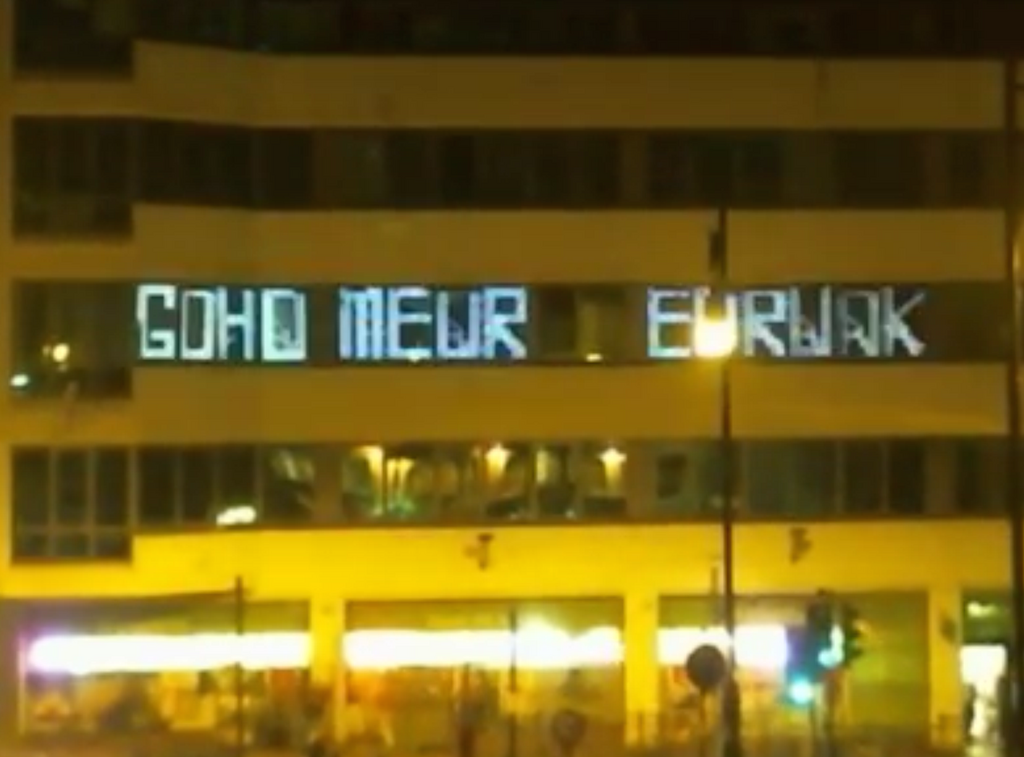
“go home ur drunk”, also by @SimplicityCom
The next morning I woke early and checked the feed. Love had prevailed.
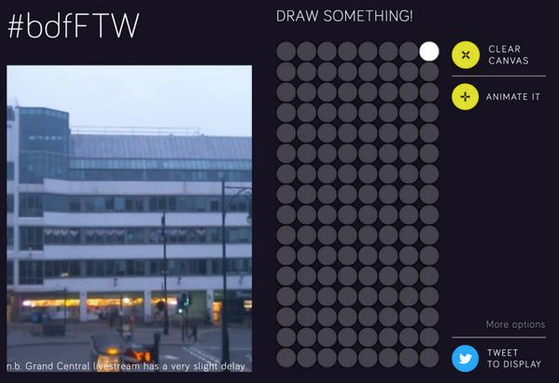
I built a gallery to explore the submissions, in animated-GIF form, and saw declarations of love, abstract art, clever multi-panel stuff, dancing stick men, agit-prop, ghosts, skulls, and lots of smiley faces. On the whole, the forces of good were winning.
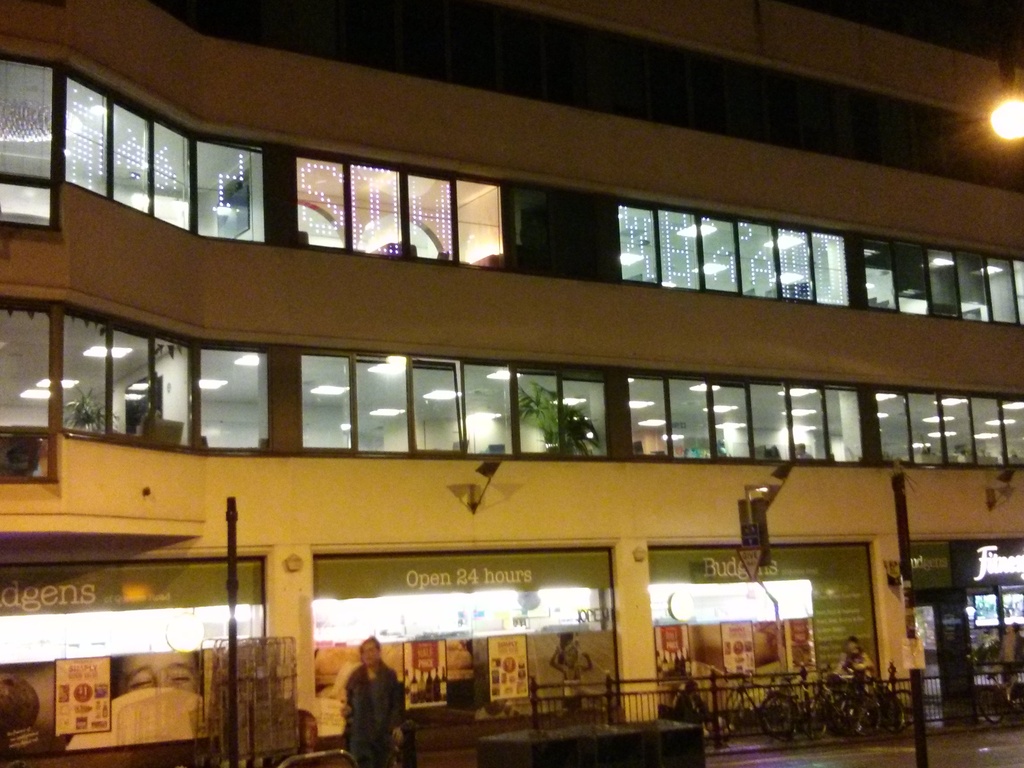
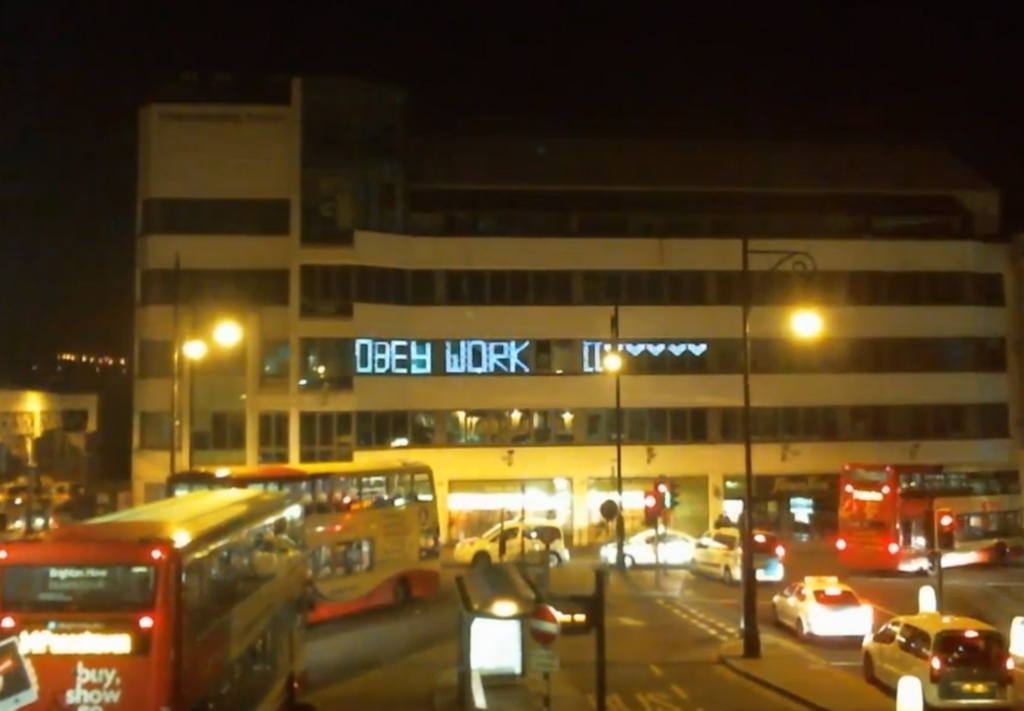
The installation is up for just a day and a half longer. So if you want to send us some pixels, and add to the gallery, get in now while you can. It is coded to switch off at midnight Thursday 25th Sept. We’d love to see what you can add.
Offering up analysis and data on everything from the events of the day to the latest consumer trends. Subscribe to keep your finger on the world’s pulse.
Consumer Research gives you access to deep consumer insights from 100 million online sources and over 1.4 trillion posts.
Existing customer?Log in to access your existing Falcon products and data via the login menu on the top right of the page.New customer?You'll find the former Falcon products under 'Social Media Management' if you go to 'Our Suite' in the navigation.
Brandwatch acquired Paladin in March 2022. It's now called Influence, which is part of Brandwatch's Social Media Management solution.Want to access your Paladin account?Use the login menu at the top right corner.



